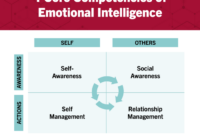Business intelligence tools examples offer a gateway into the realm of data-driven decision-making, empowering businesses to unlock valuable insights and drive growth. These tools are indispensable for organizations seeking to harness the power of data and gain a competitive edge.
From reporting and data visualization to predictive analytics and data integration, the landscape of business intelligence tools is vast and ever-evolving. This guide delves into the different types of tools available, provides examples, and offers best practices for their effective use.
Business Intelligence Tools Overview
Business intelligence (BI) tools are software applications that help businesses collect, analyze, and visualize data to make informed decisions. These tools empower organizations to uncover insights from their data, identify trends, and predict future outcomes.
To gain a competitive edge in today’s data-driven market, businesses need robust business intelligence tools. These tools empower them to analyze vast amounts of data, uncover insights, and make informed decisions. From data visualization tools like Tableau to advanced analytics platforms like SAS, there’s a wide range of options available.
If you’re interested in a career in this field, consider exploring the business intelligence developer job description. These professionals are responsible for designing, developing, and maintaining business intelligence systems, ensuring businesses have the tools they need to succeed.
Types of Business Intelligence Tools: Business Intelligence Tools Examples

There are several types of BI tools, each designed to address specific business needs:
Reporting and Data Visualization Tools, Business intelligence tools examples
These tools enable users to create interactive reports and dashboards that visualize data in charts, graphs, and tables. They provide a quick and easy way to monitor key performance indicators (KPIs) and track business progress.
Business intelligence tools examples are aplenty, but to get the most out of them, consider partnering with business intelligence services companies. These experts can help you implement and optimize your tools, ensuring you get the insights you need to make informed decisions and drive growth.
Business intelligence tools examples can provide valuable insights into your customers, competitors, and market trends.
Data Mining and Machine Learning Tools
These tools use advanced algorithms to uncover hidden patterns and relationships in data. They can identify customer segments, predict customer behavior, and detect fraud.
Predictive Analytics Tools
These tools use statistical models and machine learning to predict future outcomes. They can forecast sales, identify customer churn, and optimize marketing campaigns.
Data Integration and Data Management Tools
These tools help businesses integrate data from multiple sources and ensure data quality. They can cleanse and transform data, making it ready for analysis.
Examples of Business Intelligence Tools
The following table provides examples of popular BI tools along with their key features and capabilities:
| Tool Name | Description | Key Features | Pricing |
|---|---|---|---|
| Power BI | A comprehensive BI platform from Microsoft that offers a wide range of features, including data visualization, data mining, and predictive analytics. | – Interactive dashboards and reports – Advanced data modeling and analysis – Machine learning capabilities |
– Free version available – Premium plans starting from $9.99/user/month |
| Tableau | A leading BI platform known for its intuitive data visualization capabilities and user-friendly interface. | – Drag-and-drop interface – Extensive library of charts and graphs – Collaboration and sharing features |
– Free trial available – Creator plans starting from $70/user/month |
| Google Data Studio | A free BI tool from Google that offers basic reporting and visualization capabilities. | – Easy-to-use interface – Integration with Google Analytics and other Google products – Limited data analysis features |
– Free |
| Qlik Sense | A cloud-based BI platform that emphasizes data exploration and discovery. | – Associative engine for data exploration – Advanced visualization capabilities – Mobile and collaborative features |
– Free trial available – Subscription plans starting from $30/user/month |
How to Choose the Right Business Intelligence Tool
When selecting a BI tool, it is important to consider the following factors:
- Business needs and objectives
- Data sources and data volume
- User skills and experience
- Budget and pricing
Best Practices for Using Business Intelligence Tools
To maximize the value of BI tools, it is essential to follow best practices:
- Data preparation and cleaning
- Data analysis and visualization
- Reporting and communication
- Security and data governance
Trends and Innovations in Business Intelligence
The field of business intelligence is constantly evolving, with new trends and innovations emerging:
- Artificial intelligence and machine learning
- Big data and cloud computing
- Self-service business intelligence
- Data storytelling and data visualization
Conclusive Thoughts

In the ever-changing business landscape, business intelligence tools are becoming increasingly crucial for organizations to stay ahead. By leveraging these tools effectively, businesses can transform raw data into actionable insights, optimize operations, and make informed decisions that drive success.
Unlocking the power of data is made possible with the help of business intelligence tools. From data mining to predictive analytics, these tools empower businesses with actionable insights.
However, when it comes to interpreting and analyzing data, it’s important to understand the distinction between a business intelligence analyst and a data analyst.
Both roles play crucial roles in data-driven decision-making, but their responsibilities and expertise differ. With the right tools and expertise, businesses can harness the full potential of data to drive growth and success.
Questions Often Asked
What are the key benefits of using business intelligence tools?
Business intelligence tools provide numerous benefits, including improved decision-making, increased operational efficiency, enhanced customer insights, and competitive advantage.
How do I choose the right business intelligence tool for my organization?
Consider factors such as your business needs, data sources, user skills, and budget when selecting a business intelligence tool.
What are some best practices for using business intelligence tools effectively?
Ensure data accuracy, use clear and concise visualizations, communicate findings effectively, and establish data governance policies.




